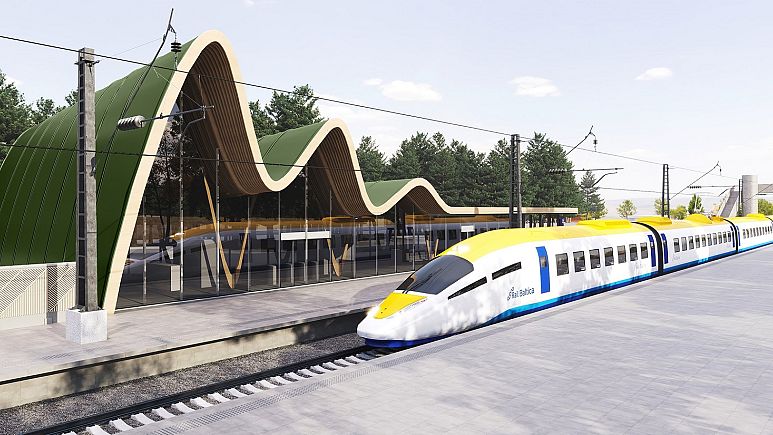https://emerging-europe.com/news/high-s ... -per-cent/
A major new report from Swedbank, a Nordic-Baltic banking group based in Stockholm, Sweden, claims that the construction of a high speed rail link between the Estonian capital Tallinn and Lithuania’s border with Poland could lift GDP in each of the three Baltic states by between 0.2 and 0.6 per cent.
...
The aim of Rail Baltica is to connect the three Baltic states (and Finland) with Central and Western Europe via a new, fast, electrified railway that will offer speeds of up to 250 k/ph for passenger trains, and 125 k/ph for goods trains. Travel time between Tallinn and Riga will be cut to one hour 40 minutes, and from Tallinn to Vilnius three hours and 40 minutes.
The railway is estimated to cost around 5.8 billion euros, which represents 5.4 per cent of Baltic GDP in 2019. As much as 80 per cent of the total cost is scheduled to be met by the European Union. Most of the construction work is expected to take place between 2022 and 2026, although tenders have already been launched for some projects.
...
The first phase of the project (Rail Baltica I), from the Polish border to the Lithuanian city of Kaunas, was completed in October 2015. The second phase (Rail Baltica II) will complete the project, connecting Kaunas, Riga and Tallinn with an electrified doubletrack line.
...
Next stop, Willoughby
~el Jefe :: RAILROAD.NET Site Administrator/Co-Owner; Carman at Naugatuck Railroad
YouTube Instagram Facebook
~el Jefe :: RAILROAD.NET Site Administrator/Co-Owner; Carman at Naugatuck Railroad
YouTube Instagram Facebook
